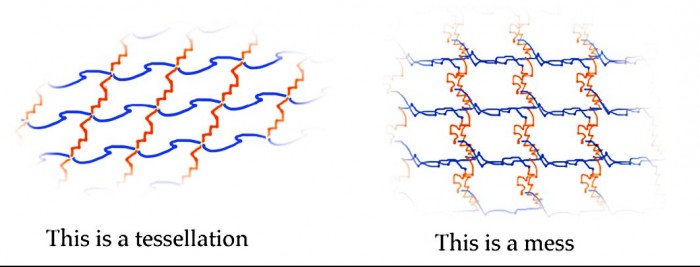Note added in March 2011! If you’re new to tessellations, before tackling this post, first watch my later post with an animation of how tessellations work.
What is a tessellation?
Any regular pattern consists of identical areas, which repeat without overlaps or gaps. An obvious example would be tiles on a wall. However tiles are usually geometric shapes – rectangles or squares as a rule, though triangles or hexagons would be possible too. In a tessellation, the cells can have wiggly edges, but still fit together like jig-saw pieces.
If you try to make a pattern like that out of any old shape, you will either end up with gaps or overlaps:
To make cells that tessellate, you have to follow a recipe. There are a whole set of recipes, but to get an idea of how they work, take a look at just one.

